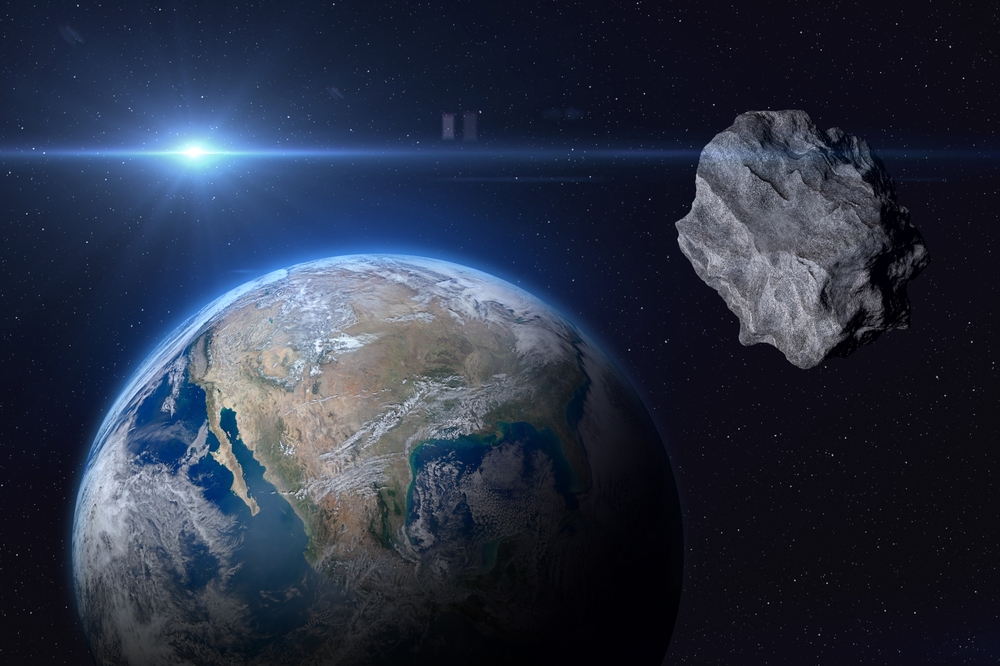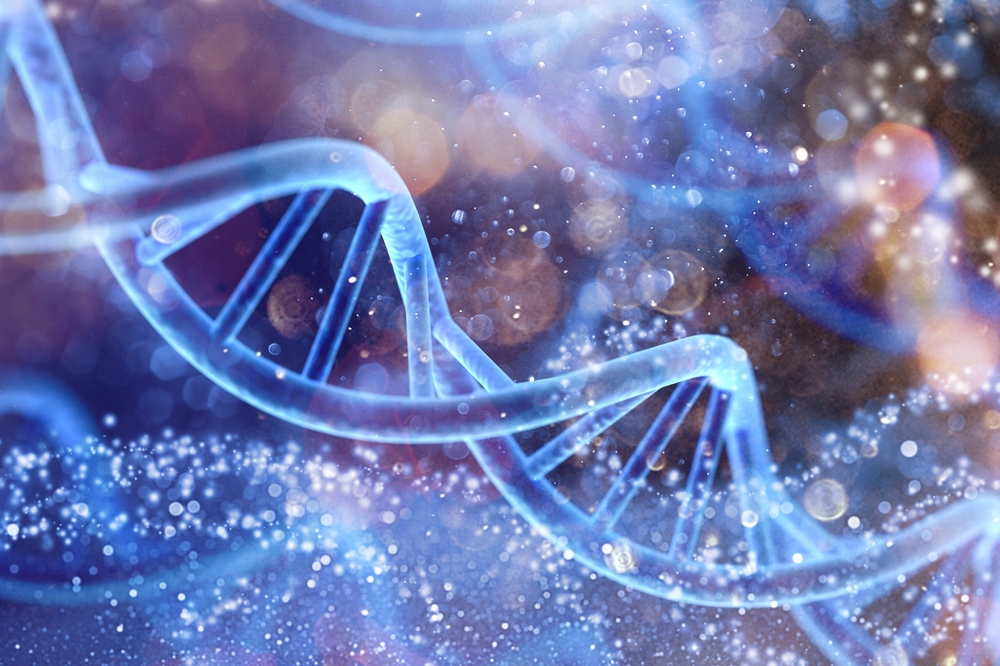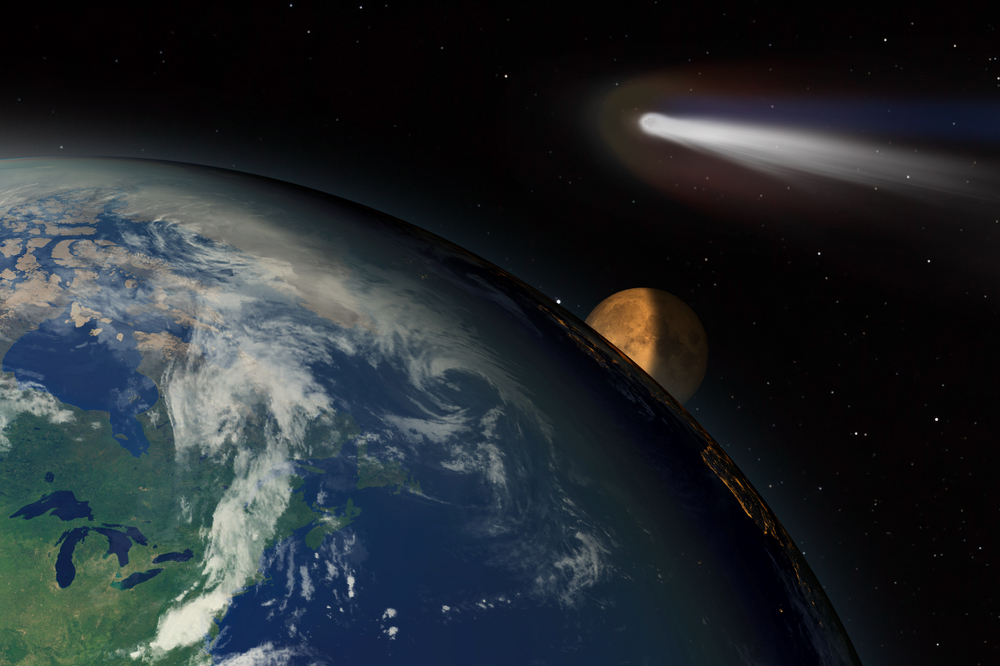All of the Bases in DNA and RNA Have Now Been Found in Meteorites

Have you ever looked up at the night sky and felt a sense of wonder? A feeling of being part of something infinitely vast and mysterious? There is a beautiful, poetic idea that we are all “stardust.” It creates a feeling of connection to the cosmos, a part of a grand, universal story. But what if this isn’t just poetry anymore? What if science has now proven that the very blueprint of life—the code written in DNA—has its origins in the stars?
For decades, it was a puzzle with missing pieces. Scientists looked inside meteorites, these ancient messengers from space, and found some of the building blocks of life. But not all of them. It was like finding a few letters of an alphabet, but not enough to write a word, let alone a story. But recently, a groundbreaking discovery changed everything. Scientists found the final, missing pieces. The complete genetic alphabet. And this discovery doesn’t just change a scientific theory; it has the power to change how we see ourselves.
The Missing Letters of Life

Imagine finding a message in a bottle that has been floating in the cosmic ocean for billions of years. That’s what scientists did in 2022. A team led by Associate Professor Yasuhiro Oba of Hokkaido University in Japan analyzed three specific meteorites—Murchison, Murray, and Tagish Lake. For the first time ever, they found all five of the fundamental components, or nucleobases, that make up our DNA and RNA.
Let’s break that down. Your DNA is like a detailed instruction manual for building you. This manual is written with four letters: A (adenine), G (guanine), C (cytosine), and T (thymine).
RNA, which helps carry out these instructions, uses the same letters, but swaps out Thymine for U (uracil).
For over 50 years, scientists had easily found A and G in meteorites. But C and T were mysteriously missing. This was a huge problem for the theory that life’s ingredients were delivered from space. How could you write the story of life without all the letters? This new discovery finally “completed the set,” proving that the entire informational toolkit needed to write our genetic story could have been delivered to a young Earth from the cosmos. The message in the bottle wasn’t just a fragment; it was the whole alphabet.
The “Cold Brew” Breakthrough
Why did it take so long to find these missing pieces? The answer is a beautiful lesson in itself. The old methods for analyzing meteorites were too harsh. Scientists were using hot acid to extract molecules from the rock. While this worked for the tougher bases (A and G), it was destroying the more fragile ones (C and T).
The breakthrough came when the scientists tried a gentler approach. NASA astrochemist Daniel Glavin, a co-author of the study, compared it to making “cold brew, rather than making hot tea.”
Instead of using destructive heat and acid, they used cool water and sound waves to gently coax the molecules out of the meteorite.
Think about that. For 50 years, the truth was there, waiting to be seen. But it was invisible until a gentler, more patient method was used. How often in our own lives do we try to force an answer with aggression or impatience, when a softer, more persistent approach is what’s needed? This discovery wasn’t just about finding molecules; it was about realizing that the way we search for truth determines what we are able to find.
Stardust in Our Veins
This discovery gives incredible weight to what’s known as the Extraterrestrial Delivery Hypothesis. It’s the idea that Earth was seeded with the essential ingredients for life from space, delivered by a constant rain of meteorites and comets billions of years ago.
Before, this was a theory with a major hole in it. Now, that hole has been filled. We have hard evidence that the complete set of building blocks for our genetic code was available on early Earth, delivered from the heavens. This transforms the poetic idea that we are “stardust” into a scientifically supported reality.
The very molecules that write the code for your eyes, your hair, your every cell, were forged in the hearts of asteroids under the warmth of a young sun. They traveled across the void of space for eons and landed on our planet, becoming part of the primordial soup from which all life emerged. Your personal story didn’t begin with your parents or your grandparents. Your origins are written in the history of the cosmos itself. You are not just living in the universe; the universe is living in you.
A Special Delivery from the Stars

Science, at its best, is skeptical. It demands proof, not just belief. After the 2022 discovery, some experts still wondered if the fragile molecules could be contamination from Earth. Maybe the meteorites, after their long journey through space, simply picked up these molecules after they landed on our biologically rich planet? It was a fair and necessary question. To truly know our cosmic origins, we needed evidence that was beyond any shadow of a doubt.
The ultimate answer came not from a rock that fell from the sky, but from a journey we took to the stars. It came from two incredible missions: Japan’s Hayabusa2 and NASA’s OSIRIS-REx. These spacecraft were more than just probes; they were robotic ambassadors sent on one of the most ambitious quests in human history. They didn’t wait for a meteorite to fall to Earth; they traveled hundreds of millions of miles across the solar system to meet asteroids named Ryugu and Bennu. These weren’t just random rocks; they are ancient, carbon-rich time capsules, preserved in the vacuum of space for over 4.5 billion years.
With incredible precision, these missions collected samples directly from the asteroids’ surfaces and brought them back in hermetically sealed, pristine capsules. The samples from Bennu, which had never touched Earth’s atmosphere or soil, were analyzed in the most sterile labs we could build. The world of science held its breath. The result was breathtaking. All five nucleobases were there.
In that moment, the debate was over. The case was closed. The lingering question of contamination was answered with a resounding “no.” The building blocks of life are, without a doubt, extraterrestrial. This was the final, definitive proof that the alphabet of life is a cosmic alphabet, delivered to our world as a special delivery from the stars.
Your Cosmic Inheritance
What does this knowledge mean? How does knowing that the code of your life came from space change the way you live your life today? It stands as a profound call for unity and perspective.
When we realize that all people are fundamentally made from the same cosmic ingredients, delivered by the same celestial messengers, then the differences that divide us—nationality, religion, race—seem incredibly small. Humanity is, in the most literal sense, family. Everyone is cut from the same cosmic cloth.
Perhaps it’s also a cure for loneliness. When you feel small or disconnected, look up at the sky and remember that the same ancient chemistry that created the stars is flowing through your veins. Don’t let the miracle of your existence be lost in the noise of daily life. You are carrying a legacy that is 4.6 billion years old, a story written with a cosmic alphabet. So live a story worth reading. Live with wonder, live with connection, and never forget the stardust you are.
Source:
- Oba, Y., Takano, Y., Furukawa, Y., Koga, T., Glavin, D. P., Dworkin, J. P., & Naraoka, H. (2022). Identifying the wide diversity of extraterrestrial purine and pyrimidine nucleobases in carbonaceous meteorites. Nature Communications, 13(1). https://doi.org/10.1038/s41467-022-29612-x
Loading...

